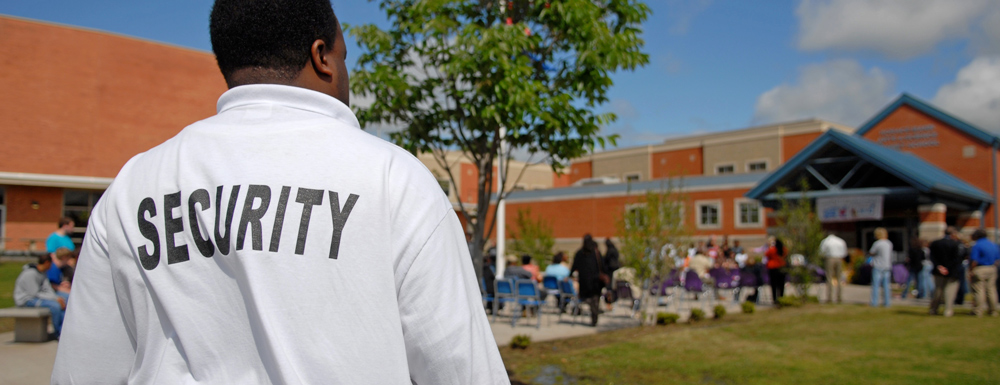
The Institute of Education Science’s 2022 Report on Indicators of School Crime and Safety found that, “In recent years, reported incidents related to several crime and safety issues have become less prevalent at elementary and secondary schools when compared with a decade earlier. Protecting against the rare instances of school violence, however, requires a broad and holistic approach, with school boards playing a critical role in providing safe environments for students and staff.”
Recent legislation has impacted both Comprehensive School Safety Plans (CSSPs) and employee safety. This article is the second in a two-part series related to school safety and focuses on student safety and CSSPs. If you are interested in learning more about additional required safety plans, see last month’s article, “Employee Safety and Workplace Violence Prevention Plans.” (csba.pub/4akpSys)
In order to address campus risks, prepare for emergencies, and create a safe, secure learning environment for students and staff, local educational agencies are required to develop and maintain a CSSP. The development of the CSSP requires consultation with local law enforcement, the local fire department and other first responders. According to the California Department of Education (CDE), CSSPs should, “include strategies aimed at the prevention of, and education about, potential incidents involving crime and violence on the school campus and aspects of social, emotional, and physical safety for both youth and adults.”
A CSSP is required to include specified components, including: (1) assessment of the current status of school crime committed on school campuses and at school-related functions; (2) child abuse reporting procedures; (3) routine and emergency disaster procedures, including adaptations for students with disabilities; (4) suspension and expulsion policies and procedures; (5) procedures to notify teachers of dangerous students; (6) discrimination and harassment policy; (7) if the school has adopted a dress code prohibiting students from wearing “gang-related apparel,” the provisions of that dress code and the definition of “gang-related apparel;” (8) procedures for safe ingress and egress of students, parents/guardians and employees to and from school; (9) a safe and orderly school environment conducive to learning; (10) rules and procedures on school discipline; (11) procedures for conducting tactical responses to criminal incidents, including procedures related to individuals with guns on campus and at school-related functions; (12) procedures to assess and respond to reports of any dangerous, violent or unlawful activity that is being conducted or threatened to be conducted at the school, at an activity sponsored by the school, or on a school bus serving the school; and (13) for schools that serve students in any of grades 7-12, a protocol in the event a student is suffering or is reasonably believed to be suffering from an opioid overdose.
CDE has a Compliance Tool for School Safety Plans posted on its website (csba.pub/CSSPchecklist) that can be used as a checklist to assist schools in creating a compliant plan that contains all of the legally required contents.
There are also procedural requirements to be followed when adopting, reviewing and updating CSSPs. School site councils are required to review and update their Comprehensive School Safety Plan annually by March 1 of each year. A new school campus that begins offering classes to students must adopt a CSSP within one year of initiating operation and is required to review and update its plan by March 1 every year thereafter.
Small school districts have somewhat different requirements related to safety plans. Districts with an average daily attendance of 2,500 or fewer may develop a districtwide comprehensive safety plan in lieu of developing school plans. The superintendent may conduct the annual review in small school districts that choose to develop a districtwide plan.
Updated CSSPs must be submitted to the board for approval. While the board may choose to delegate the responsibility to review and approve the updated plans to the superintendent, the board ultimately remains responsible for ensuring compliance with the law.
Several new laws that became effective Jan. 1, 2024, impact CSSPs.
Senate Bill 323 requires districts’ annual review of CSSPs to include appropriate adaptations for students with disabilities. After the first evaluation or review is conducted, and after each annual evaluation or review, a school employee, a student’s parent/guardian or educational rights holder, or a student may bring concerns about an individual student’s ability to access disaster safety procedures described in the CSSP to the principal.
Additionally, Senate Bill 671 requires CSSPs to include procedures to assess and respond to reports of any dangerous, violent or unlawful activity conducted or threatened to be conducted at the school, at an activity sponsored by the school, or on a school bus serving the school.
Lastly, SB 10 requires the CSSP for schools that serve students in any of grades 7-12 to include a protocol if a student is suffering or is reasonably believed to be suffering from an opioid overdose.
Boards play a vital role as they establish policies that enhance school security and create positive school climates where all students can learn, grow and thrive. Sample Board Policy/Administrative Regulation 0450 – Comprehensive Safety Plan, BP/AR 3516 – Emergencies and Disaster Preparedness Plan, BP/AR 4157/4257/4357 – Employee Safety, and AR 4157.1/4257.1/4357.1 – Work Related Injuries were recently updated as part of the March 2024 policy packet, making it a great time to consider your district’s procedures and review its policies on school safety.
Review CSBA’s resources on school safety: csba.org/schoolsafety.